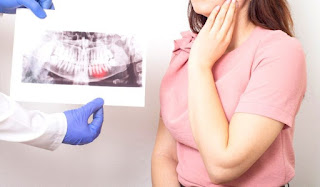What is a Dental Bone Graft?

Dental Bone Graft is a procedure that is conducted to boost the amount of bone in a part of the jaw where there has been a bone loss or any part which needs additional support. The bone may be taken from some other part of the body & surgically fused to the existing jaw bone or a synthetic bone material may be used for the procedure which is usually needed before procedures like dental implants or if the health of the nearby gums and teeth is being negatively affected by the bone loss. Dental bone grafting can be performed in several ways but the basic procedure remains the same, where an incision is made in the jaw by a dentist or oral surgeon and grafts or attaches other bone material to the jaw. A dental bone graft is generally performed when someone has lost one or more adult teeth or suffers from gum disease, a condition that can lead to bone loss in the jaw. Read more




.jpg)
